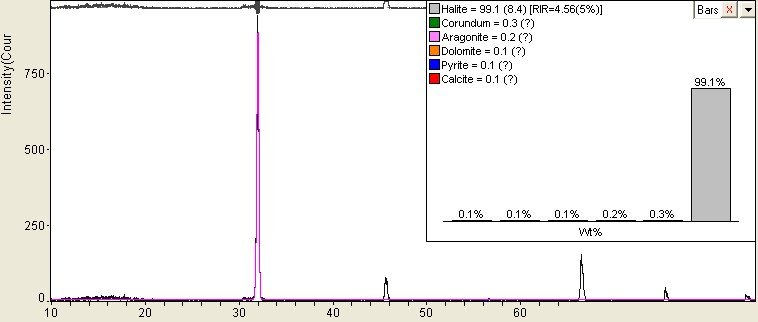MES offers rapid and reliable X-Ray Diffraction analysis.
x-ray diffraction ANALYSIS (xrd)
X-Ray Diffraction (XRD) is a non-destructive test method to analyze the structure of crystalline materials. XRD is often used to identify mineral and metal compounds within a solid material, verify a material composition, or to identify the source of unwanted deposits.
Our expert chemists can assist you with X-ray diffraction (XRD) for characterizing your crystalline materials. XRD analysis can also provide information on structures, preferred crystal orientation, and other structural parameters, such as average grain size and strain distribution.
THE XRD ANALYSIS PROCESS
Samples are typically submitted as solid mineral or powdered form. Solid materials are milled or ground to a fine powder, and placed on the sample stage.
X-ray diffraction patterns are produced by a goniometer, which is rotated at specific angles while bombarding the sample material with X-rays. The diffraction pattern peak intensities are determined by the distribution of atoms within the lattice. The x-ray diffraction pattern is specific to the periodic atomic arrangements in a given material, which is compared to the ICDD standard database of x-ray diffraction patterns for phase identification.
XRD ANALYSIS REPORTS
The XRD instrument generates a graph in the form of counts versus degrees 2-theta. Specific mineral compounds are represented by the reflectance of certain regions of the scan. By comparing the resulting spectrum to a database of over 100,000 mineral compounds, our staff chemists can quickly identify the matching mineral groups. The XRD graph, as well as close database matches are presented in each report. Combined with elemental analysis by EDS, XRD is a powerful tool for the determination of unknown mineral compounds.
CAPABILITIES
Identification of powdered metal and mineral compounds
Quantification of primary and minority crystalline phases
Quantification of preferred orientation
Measurement of residual stress in metals and ceramics
Measurement of crystalline size
SAMPLE REQUIREMENTS
Requires 5 grams of material (minimum), which must be ground into a powder



